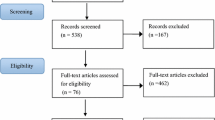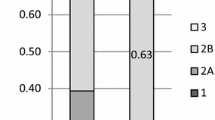Abstract
The number of knee replacement revisions is increasing over the years due to the raising number of first implants performed annually worldwide. It is therefore necessary to recognise the need for a revision and to know how to perform it, in order to choose the best solution that can be adopted depending on the problems encountered.
Manufacturers, in fact, offer a great variety of products and among them intramedullary stems are the most important, made to increase the prosthetic fixation to the bone in revision surgeries. They may have different lengths, they can be fixed at the metaphysis or diaphysis and they can be cemented or not cemented. There are also offset stems that allow a good adaptation to the femoral and tibial metaphyseal and diaphyseal curvature. The stems are often associated with systems such as sleeves and augments to compensate for the loss of bone stock. Despite of the wide variety of proposed solutions there aren’t specific indications in literature. The purpose of this study is to revise the literature to identify when and how the use of intramedullary stems is recommended.
The comparable results observed in the literature by cemented and uncemented stems show how both solutions are effective stabilisation systems in the knee arthroplasty revisions. The choice of the correct implant technique must be carried out case-by-case analysing advantages and disadvantages of each fixation. In particular, cemented stems have a better seal in osteoporotic bone and allow for a better adaptability in the presence of post-traumatic deformations. Press-fit stems are rather more suitable in case of periprosthetic fractures and in case of necessity of lower limb alignment correction, in presence of good bone quality.
From what we analysed, we suggest the use of the intramedullary stems in all knee arthroplasty revisions, trying to use non-cemented stems of the shortest length able to offer a good stability.



Similar content being viewed by others
Bibliografia
Gehrke T, Kendoff D, Haasper C (2014) The role of hinges in primary total knee replacement. J Bone Jt Surg 96–B:93–95
Completo A, Simões JA, Fonseca F, Oliveira M (2008) The influence of different tibial stem designs in load sharing and stability at the cement-bone interface in revision TKA. Knee 15:227–232
Patel AR, Barlow B, Ranawat AS (2015) Stem length in revision total knee arthroplasty. Curr Rev Musculoskelet Med 8:407–412
Bistolfi A, Massazza G, Rosso F, Crova M (2012) Rotating-hinge total knee for revision total knee arthroplasty. Orthopedics 35:e325–e330
Beaver WB (2014) Clinical & radiographic outcomes of cemented vs diaphyseal engaging cementless stems in aseptic revision TKA. J Arthroplast 29:224–228
Soenen M, Baracchi M, De Corte R et al. (2013) Stemmed TKA in a femur with a total hip arthroplasty: is there a safe distance between the stem tips? J Arthroplast 28:1437–1445
Ghazavi MT, Stockley I, Yee G et al. (1997) Reconstruction of massive bone defects with allograft in revision total knee arthroplasty. J Bone Jt Surg Am 79:17–25
Haas SB, Insall JN, Montgomery W, Windsor RE (1995) Revision total knee arthroplasty with use of modular components with stems inserted without cement. J Bone Jt Surg Am 77:1700–1707
Vasso M, Beaufils P, Cerciello S, Schiavone Panni A (2014) Bone loss following knee arthroplasty: potential treatment options. Arch Orthop Trauma Surg 134:543–553
Kim YH, Kim JS (2009) Prevalence of osteolysis after simultaneous bilateral fixed- and mobile-bearing total knee arthroplasties in young patients. J Arthroplast 24:932–940
Author information
Authors and Affiliations
Corresponding author
Ethics declarations
Conflitto di interesse
Gli autori M. Melato, P. Gentili, A. Bertorello, M. Schiraldi dichiarano di non avere alcun conflitto di interesse.
Consenso informato e conformità agli standard etici
Tutte le procedure descritte nello studio e che hanno coinvolto esseri umani sono state attuate in conformità alle norme etiche stabilite dalla dichiarazione di Helsinki del 1975 e successive modifiche. Il consenso informato è stato ottenuto da tutti i pazienti inclusi nello studio.
Human and Animal Rights
L’articolo non contiene alcuno studio eseguito su esseri umani e su animali da parte degli autori.
Rights and permissions
About this article
Cite this article
Melato, M., Gentili, P., Bertorello, A. et al. Quando e perché utilizzare lo stelo endomidollare nelle revisioni di protesi di ginocchio. LO SCALPELLO 31, 162–167 (2017). https://doi.org/10.1007/s11639-017-0215-y
Published:
Issue Date:
DOI: https://doi.org/10.1007/s11639-017-0215-y




